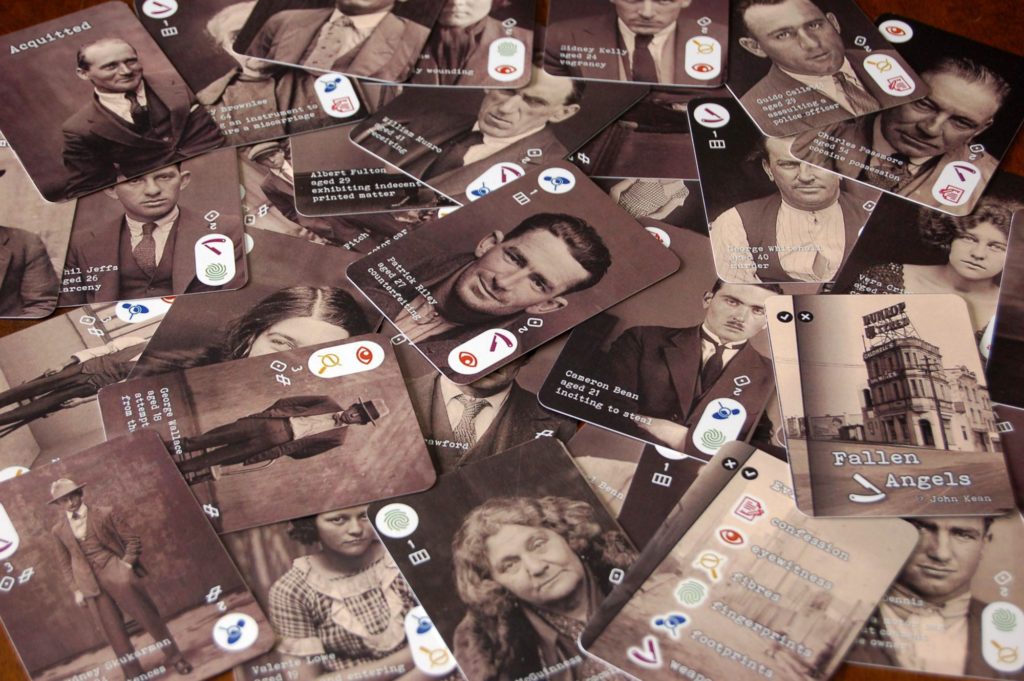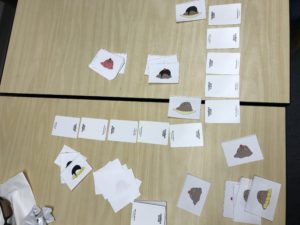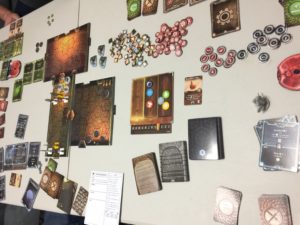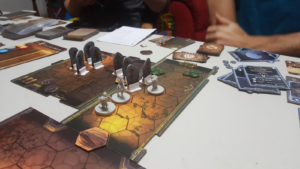To show off the brilliant mind of John Kean, we wanted to share some of his thought process while making Black Sonata. This series of posts are pulled from his Work In Progress thread on BoardGameGeek. Here’s part 1:

THE CHALLENGE
29 May 2017
Recently I have been enjoying a range of solitaire PnP games, but noticed that there are very few replayable solitaire deduction games. I love deduction games and it seemed to me there is a gap here. A few weeks ago I posted a thread on this:
Replayable solitaire deduction game – is it possible?
The response was very interesting. At first the consensus was “nope, not possible”. Then it morphed to “OK, maybe possible with the use of a game app”. Then finally a couple of suggestions came out about how it might be approached, using edge-notched cards for instance. Overall, the consensus seems to be that it *might* be possible, maybe.
Well, that’s enough for me – challenge accepted!
I have enjoyed designing games for recent BGG contests, and in this year’s 9 Card Contest, just finishing up now, I set myself an extra challenge as a seed for creativity. In that case it was to design a solitaire deck-builder in just 9 cards, and I’m not sure that the resulting game (Blorg in the Midwest) quite achieved that, but it was a lot of fun exploring the idea with suggestions and input from this community.
So my personal design challenge for this contest is to design a replayable solitaire deduction game (not based on elimination), without the need for an accompanying app. I have been mulling this over in my head for a few weeks now, and I think I have an approach that may work. But more about that soon…
A POSSIBLE MECHANIC?
A few days ago a friend introduced me to Dobble, and like every newbie my first reaction was – how the heck do they do that?! The mechanism of every card having one (and only one) symbol in common with every other card seems somehow miraculous. I had to figure out how it works, and once I did I started to wonder if it might be a way to attack the solo deduction problem I had been thinking about…
Of course, you smart people will have figured out by now that it won’t work. Removing one card from the Dobble deck, you can’t possibly deduce what is on it from the remaining cards without comparing every single one of those cards with every single other one. Which would not be fun. And if there is more than one card that you don’t know then there is no way to deduce which of them is the target card.
But what about if you simplified the number of symbols and added a second loop? Well I’ve been playing around with that on paper and I think I have come up with something that is sort of half Dobble and half Mastermind.
It would use 11 cards, and each card would have three mystery symbols. You’d shuffle the cards and set one aside unseen. Your task is to deduce the three symbols on the set aside card from a subset of the remaining ones. There would need to be another game mechanic for how you earn a clue card, but each time you do you’d get more information on the target card, because each clue would say how many of that card’s symbols are present on the target card.
I think it works on paper. Next step is to try it out with some old business cards…






